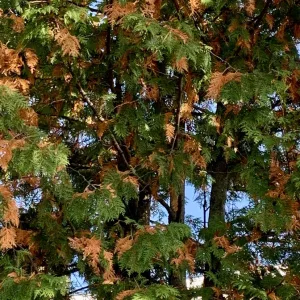My last article was about planting fruit trees and bushes. Now I want to give you some information about pruning those trees.
There are two main times to prune fruit trees: late winter in the dormant state and mid summer when the trees are in full leaf. Each pruning session is timed for a specific reason.
When the trees are dormant, pruning is done to correct structure. Without leaves to impede your view, it is the best time to see what really needs to be done.
Just a word of caution before you break out the pruning tools. How you prune will determine the pattern of growth once it begins. It should be a slow and thoughtful task.
First, always look for broken or dead limbs, although dead wood may be more visible once the tree leaf’s out. Remove those branches at the point where they meet the main trunk or branch. Prune at a slight outward angle and don’t leave enough of a stub that you can ‘hang a hat on’.
If you are removing a major limb with a lot of weight to it, be sure to use the triple cut method of pruning. This will ensure that as you saw to remove the limb, it won’t fall, tearing bark as it drops.
Triple Cut Pruning:
- Do the first cut on the underside of a major limb 12” from the main trunk of the tree. Be sure to only saw in a few inches. If you cut too deep at this point, the limb will start to drop, trapping your saw in the cut.
- The second cut is on the top of the limb about 6” out from the under-cut. As you cut into the limb, the weight of the branch will pull it down but as it falls, the bark will only tear to the point of your under-cut.
- The third cut removes the stub. Cut at a slight outward angle, starting close to the trunk.
Next look for waterspouts. These are small branches that grow straight up from larger limbs. They grow as a reaction to hard pruning. If left alone, they will create a tangled mess in the centre of your tree.
When you have a tree that requires quite a bit of work, you need to look at the job as a 3-year project. E.g., you see a dozen problem branches that need to be removed, plan on taking 4 off this year, 4 next year and the final 4 the year after.
If you were to remove all 12 branches at one time, the tree reacts by sending all its stored energy to those that remain. Dormant buds on the top of the branches break and new growth shoots skywards creating those waterspouts.
Branches that cross and tangle are the next ones to tackle. When one branch rubs on another, the bark wears down, opening a wound that can allow insects and disease a way into the tree.
Always carefully consider before cutting off a branch. Pull one to the side to see the impact of removing it. Then pull the other one way. Leave the branch that best suits the structure of the tree, removing the less desirable one.
Your gaol is to create a nice open tree canopy so light and air can reach all leaves and fruit production will be good. Thinning out the tree each year in late winter will ensure you don’t end up with a major pruning job that has to be done over 3 years.
Pruning fruit trees in July is done to help encourage fruiting spurs. Long growth is shortened by about 1/3. Prune in front of a bud facing outwards so that you don’t create a future pruning problem.




